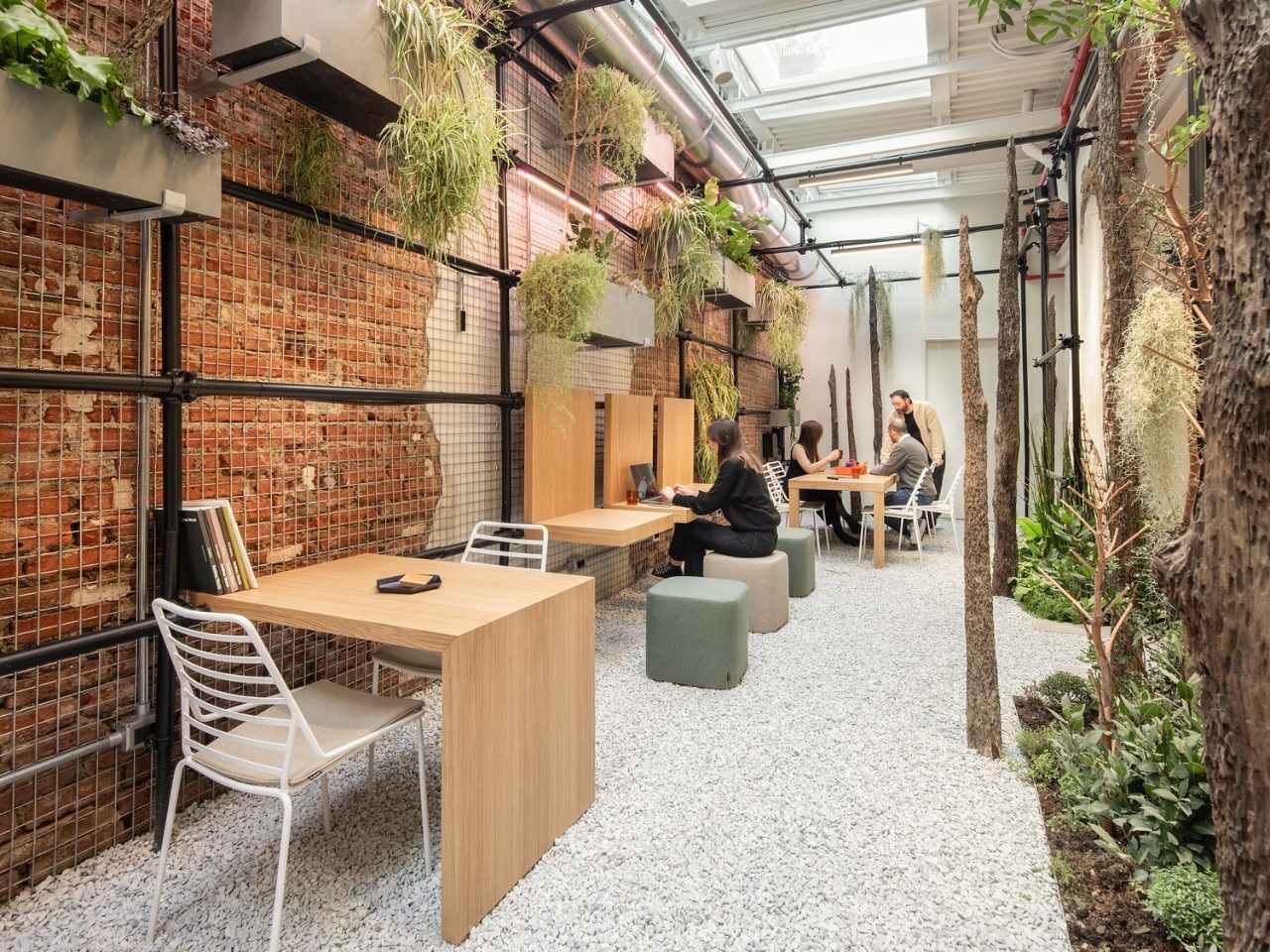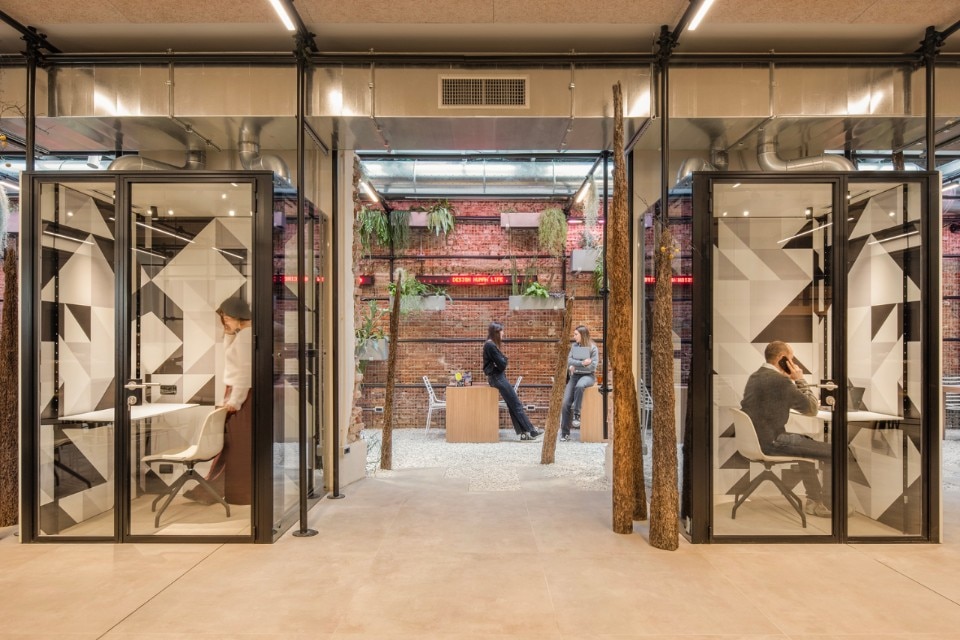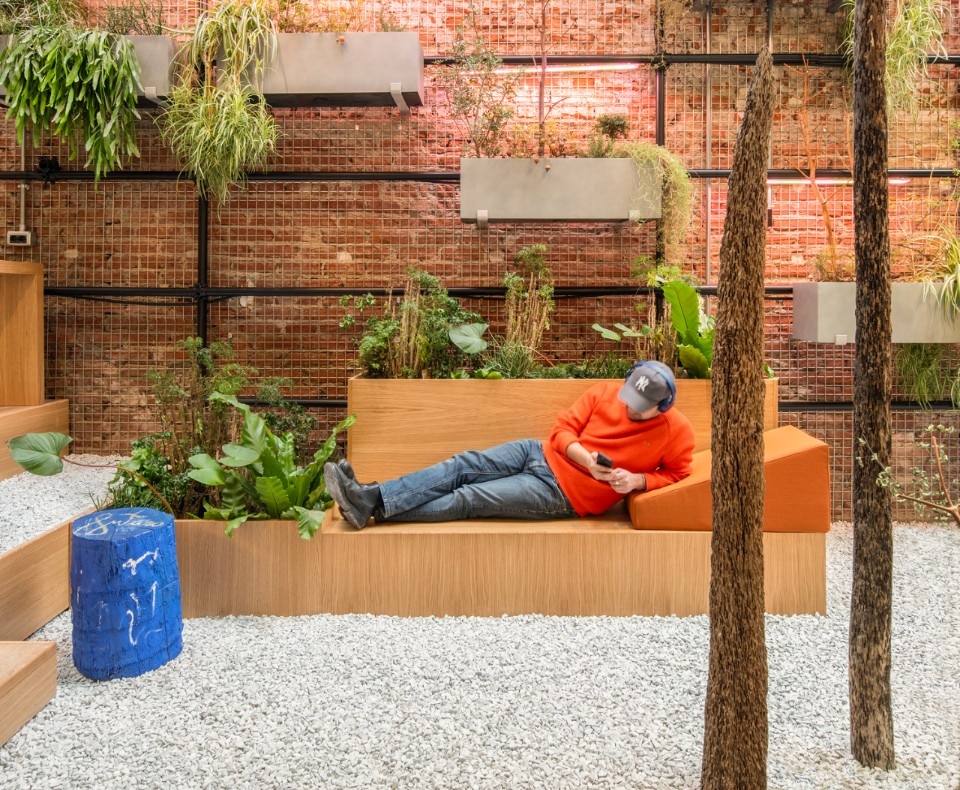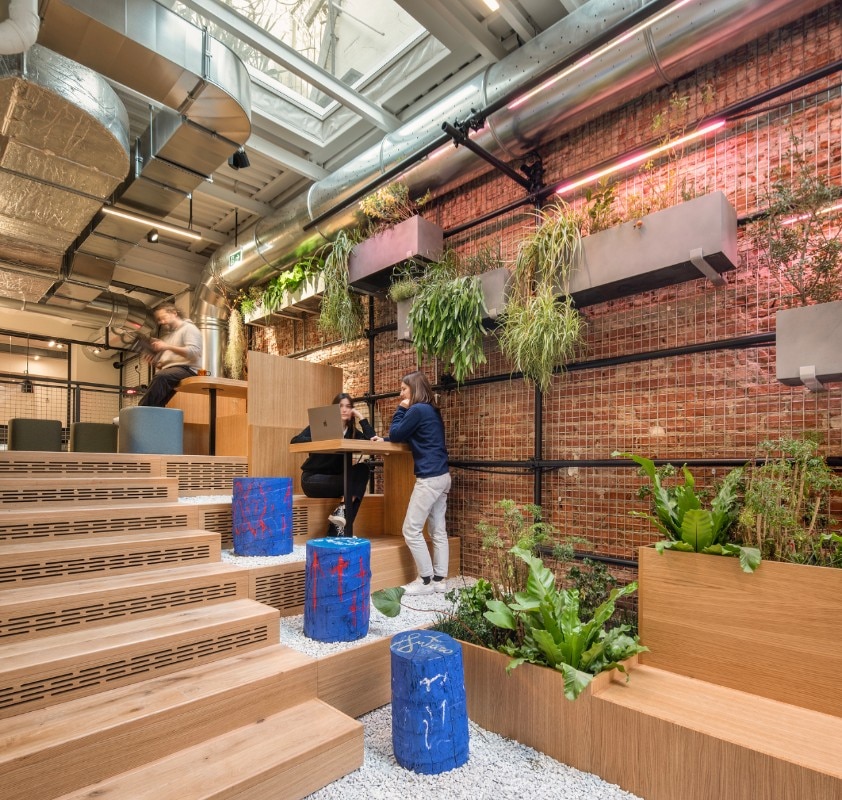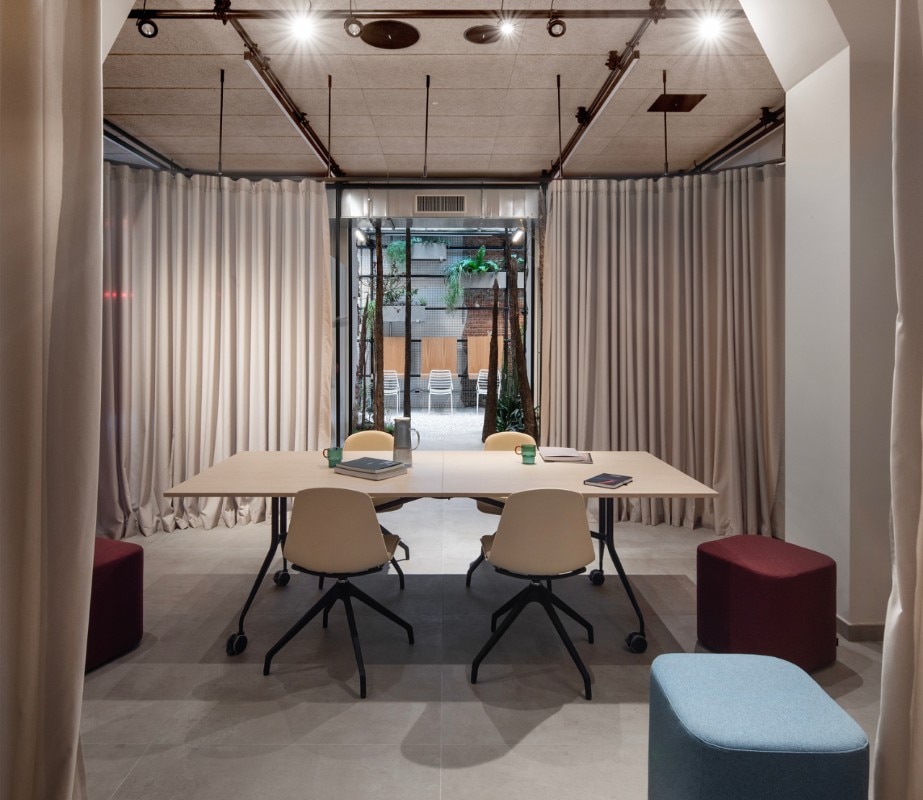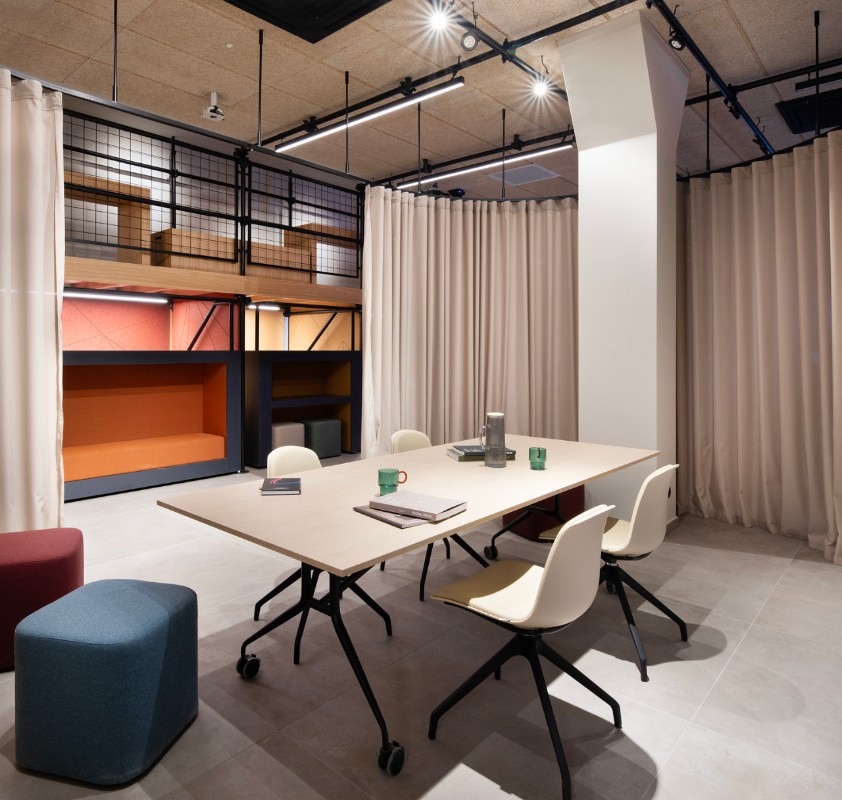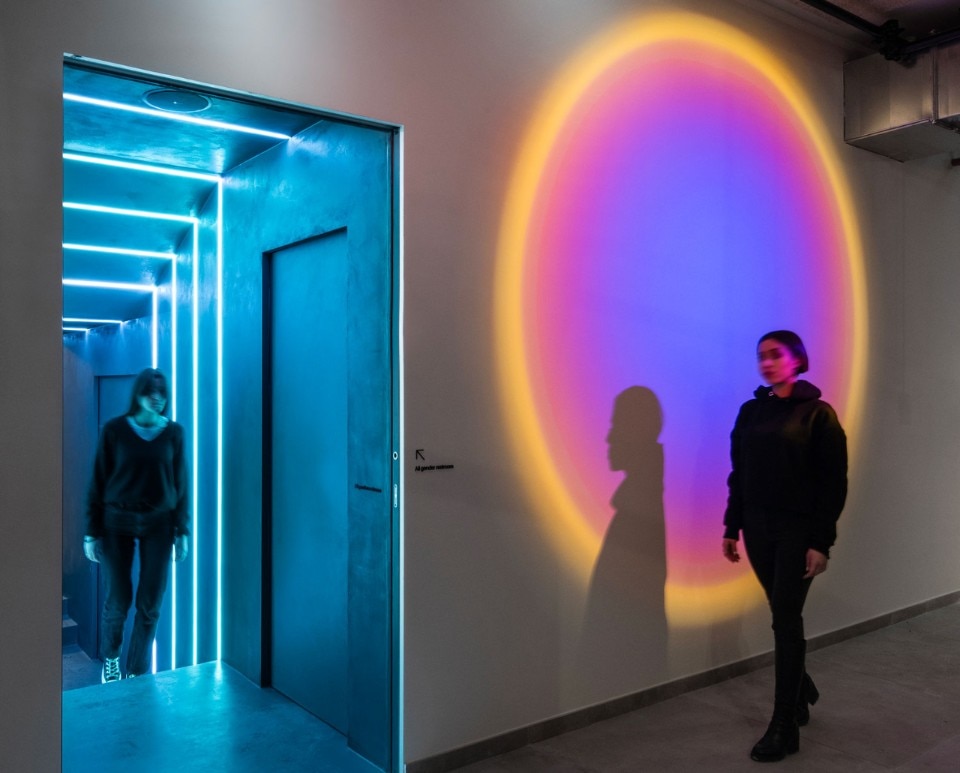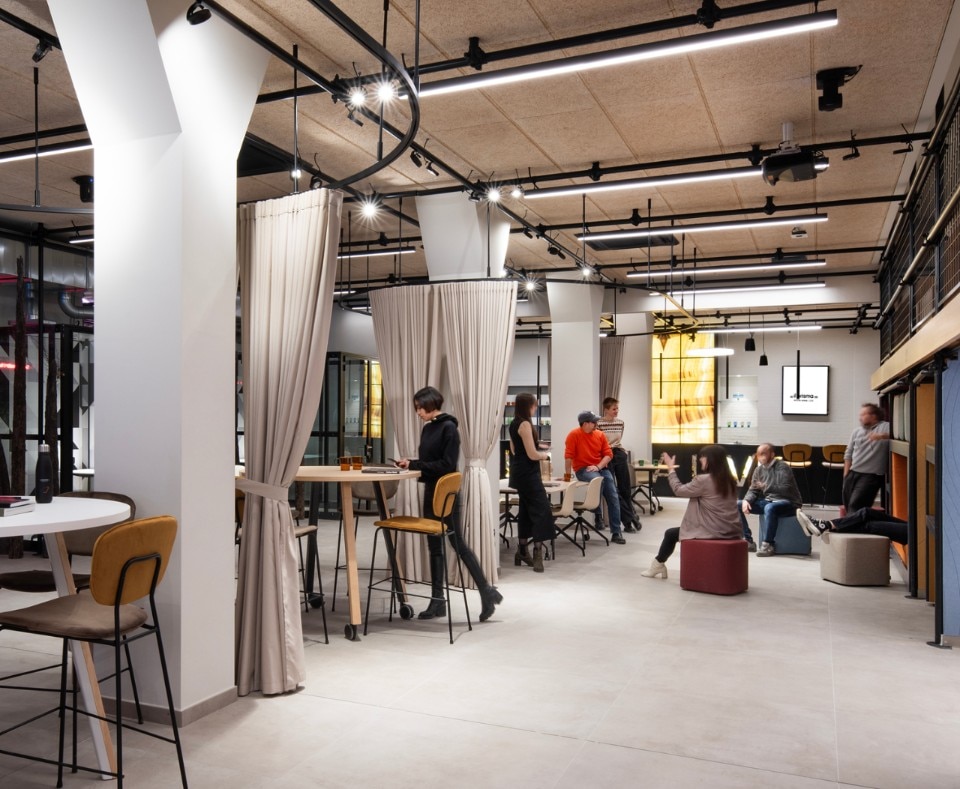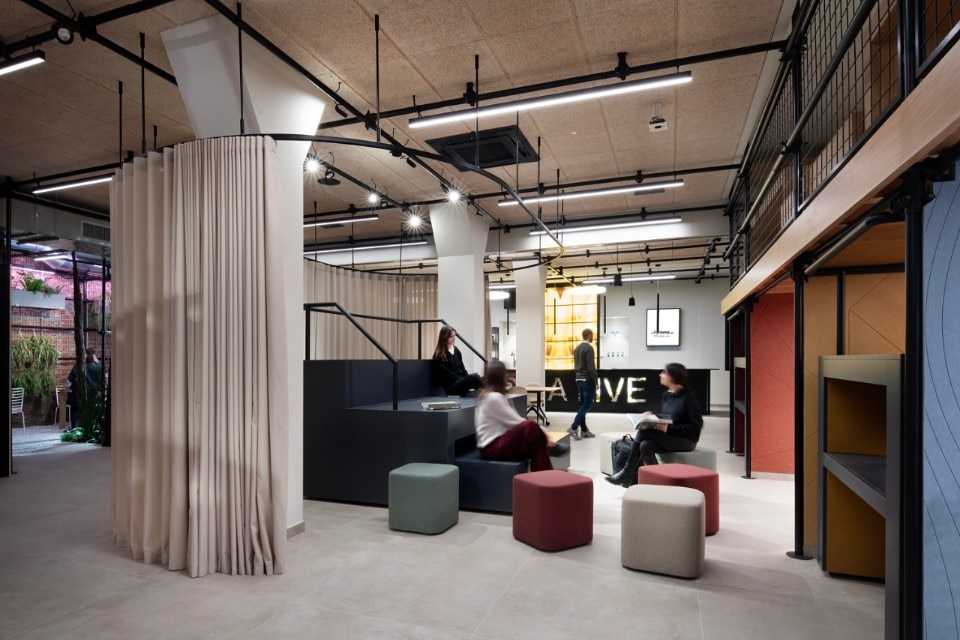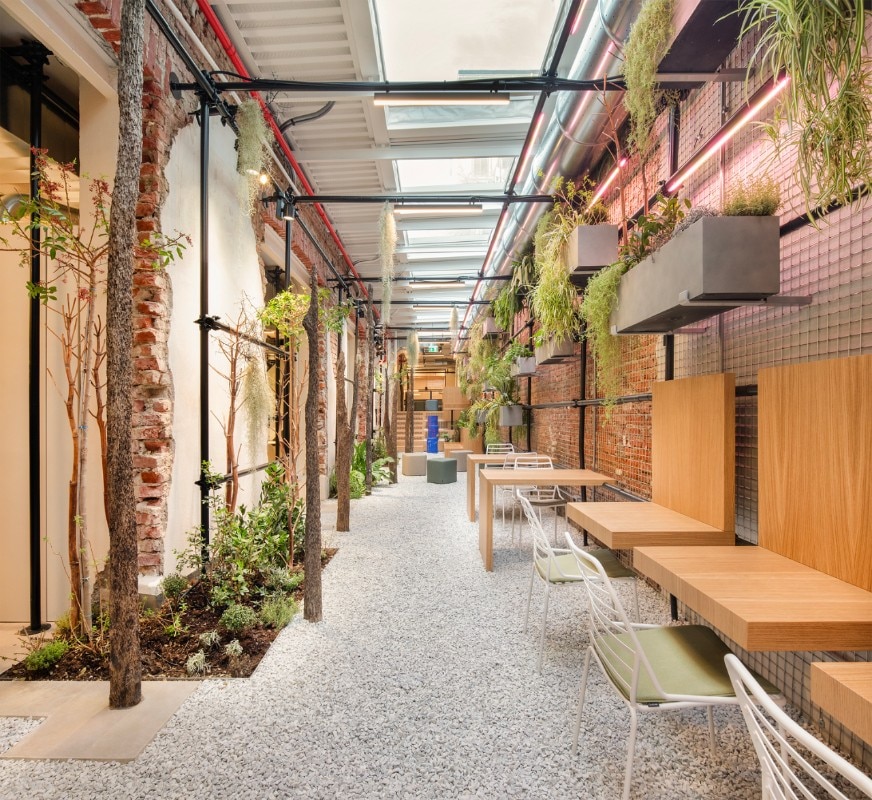The “death of the office” – as it has been conceived in recent decades, static, with univocal correspondence between activities and points in the space – is involving different sectors, not all with the same force but undoubtedly with some effect, from the hot desking of the 2000s to the smart working of the postpandemic era. Il Prisma, an Italian design firm that has addressed this topic in several commissions, this time has aimed to bring this process directly to its own home, with the design of its new Milanese headquarters, christened Il Prisma Live.
In the words of the firm’s founding partner Stefano Carone, rather than an office it is “a place entirely designed to encourage the unexpected”. A fluid environment where the firm wants to translate into spatial elements an idea of pervasive knowledge sharing, on which it aims to build its positioning, both professional and cultural, for the present and the future. The 1100 square meters of the intervention are articulated around the large Live Area, arund its layout, both complex and flexible at the same time, with a matrix defined by Innocenti industrial tubes allowing the organization of different work settings through combinations with configurable furniture, and the extension or separation from a mezzanine and a bar through bleachers and movable walls. A Lab dedicated to discovering materials and hosting research focus groups integrates the program, together with an internal garden in continuity with the other spaces, a hortus conclusus where the contamination of multispecies greenery accommodates different needs for work or concentration.
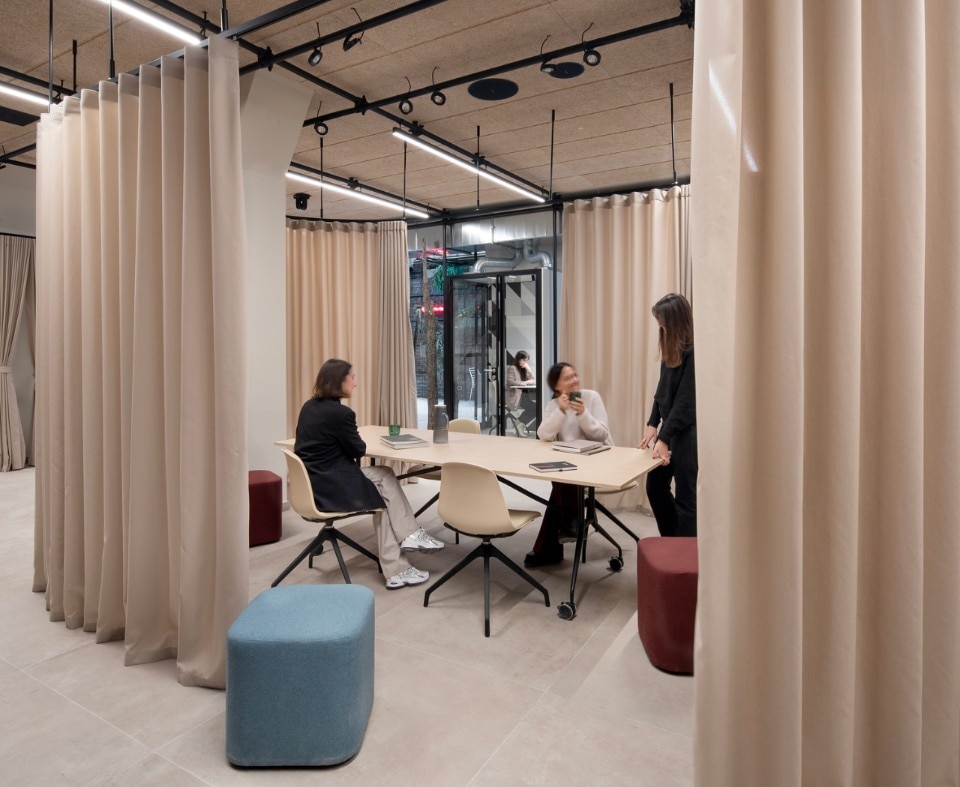
All the departments at Il Prisma have contributed to the concept: Cityscape and Worksphere units for urban planning and workspaces have developed the aspect of interaction with the city on a human scale, a characterization of Live as an experiential space, influencing the behaviors of users by fostering encounters, most preferably unorganized ones; Destination (retail and hospitality) unit has laid out a framework of interior solutions aiming to invest in what Robin Dunbar has anointed as weak ties, while Innovation unit has stretched across the various contributions by setting up a cultural program of research to be developed within the new space, this year with artist Marco Nereo Rotelli. Technology then plays a pervasive role in the project, in innervating all of its digital component of sound and visual interface, and in contributing to the continuous redefinition of spatial settings through lighting: the biophilic approach, however, is seen as the one to bring everything into a system, integrating the life of vegetation and that of people, in a context of interaction instead of mere decoration.

